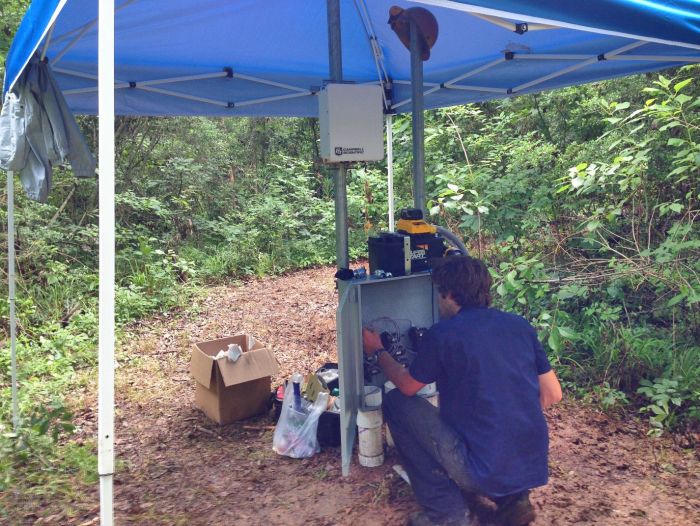







In 2013, a sinkhole appeared next to a historic home in southern Louisiana. Over the next few months, the sinkhole grew to be 30.5 meters (100 feet) deep and 61 meters (200 feet) wide. RESPEC designed, fabricated, and installed a robust extensometer system in early 2014 to monitor the potentially unstable slope. RESPEC selected Campbell Scientific’s CR1000 datalogger as the backbone of the system.
The custom extensometer system continually monitors for ground movement between the historic home and the sinkhole edge. It also monitors precipitation, which may contribute to ground collapse. The CR1000 is mounted away from the sinkhole edge to reduce any chance of equipment loss should additional collapse occur. String extensometers are mounted near the CR1000 and extend more than 30.5 meters (100 feet) to the sinkhole edge using a 68-kilogram (150-pound) ultra-high-molecular-weight polyethylene (UHMWPE) line. This reduces the chance of sensor loss and allows for multiple anchor points between the CR1000 and the sinkhole edge.
The UHMWPE line is protected in telescoping polyvinyl chloride (PVC) buried a few inches below the soil surface. Sections of telescoping PVC are anchored to the ground, allowing ground movement to be measured at various locations away from the edge of the sinkhole.
The real-time instrumentation system uses an RV50 cellular gateway to facilitate two-way communication. Data is uploaded directly to RESPEC’s Eagle.io dashboard platform. The dashboard displays data charts and monitors data for sinkhole movement. If movement exceeds a predefined threshold, notifications are sent to both the client and RESPEC instrumentation engineers via email and text message.
The equipment was installed in southern Louisiana, a challenging environment due to extreme humidity, high temperatures, hurricane-force winds, heavy rainfall, and insects and critters prone to building many nests and chewing everything in their path. The system was installed in 2014 and remains functional today (in 2021), attesting to the ruggedness and longevity of Campbell Scientific equipment and RESPEC design.